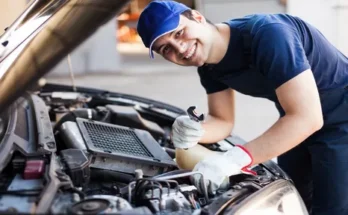In today’s interconnected world, air travel has become an indispensable part of many people, emphasizing the paramount importance of aircraft safety and functionality. Behind the polished exterior of an airplane, a multitude of features and systems work harmoniously to guarantee a secure and efficient journey. From the moment an aircraft takes off to the point of landing, these features are pivotal in preserving the aircraft’s integrity. This article explores nine essential elements that contribute to the smooth operation of an aircraft.
1. Flight Control Systems:
At the heart of an aircraft’s functionality lies its flight control system. Consisting of ailerons, elevators, and rudders, these systems empower pilots to manage the aircraft’s attitude and direction.
Cutting-edge fly-by-wire technology has innovatively transformed these systems by substituting conventional manual controls with electronic interfaces. This evolution enhances precision and responsiveness, ensuring the aircraft’s stability and maneuverability.
2. Avionics Suite:
The avionics suite encompasses electronic systems facilitating communication, navigation, and monitoring. From GPS navigation to communication with air traffic control, avionics play a vital role in keeping an aircraft on course.
Additionally, advanced avionics provide real-time data on engine performance, weather conditions, and other critical parameters, enabling pilots to make informed decisions for a safe flight.
3. Powerful Engines:
The engines, often regarded as the heartbeat of any aircraft, are meticulously designed for efficiency, thrust, and reliability. Modern jet engines, including those using high-bypass turbofan technology prevalent in commercial aviation, provide the essential thrust for both takeoff and cruising.
Continuous advancements in engine technology not only enhance fuel efficiency but also play a pivotal role in ensuring the overall safety of air travel, with a particular emphasis on the development and use of high-quality aircraft engine oils.
4. Aerodynamic Design:
The aerodynamic design of an aircraft is a meticulous process that significantly influences its overall performance and efficiency. Engineers painstakingly shape the aircraft to minimize drag and optimize lift, employing innovations such as winglets to specifically reduce vortex drag and enhance fuel efficiency.
This attention to detail in the overall design not only ensures stability during flight but is also crucial for both the safety of the aircraft and its fuel economy, underscoring the intricate balance between technological advancements and the fundamental principles of aviation engineering.
5. Emergency Systems:
In the unlikely event of an emergency, aircraft are equipped with a comprehensive array of safety systems. Emergency oxygen masks, strategically placed throughout the cabin, swiftly deploy to provide passengers and crew with a crucial supply of oxygen.
State-of-the-art fire suppression systems are meticulously designed and rigorously tested to swiftly contain and extinguish potential onboard fires. Additionally, evacuation slides, engineered for swift deployment, ensure a rapid and organized evacuation, further enhancing the overall safety protocol of air travel.
6. Weather Radar Systems:
Weather conditions can change rapidly during a flight, presenting challenges for pilots. Hence, the reliance on advanced weather radar systems becomes critical to navigate through turbulence and storms.
These systems offer real-time weather information, empowering pilots to make informed decisions and navigate around hazardous conditions effectively.
The continuous improvement in weather forecasting and radar technologies not only enhances safety but also contributes significantly to the overall smoothness and efficiency of flights, ensuring a secure and comfortable journey for passengers and crew alike.
7. Structural Integrity:
The structural integrity of an aircraft is non-negotiable. Engineers use lightweight yet durable composites and alloys to construct the airframe.
Regular maintenance and rigorous inspections ensure that the structure can withstand the stresses of flight. The aircraft’s ability to endure diverse conditions, from high-altitude pressure differentials to extreme weather, attests to the robustness of its design and construction.
8. Communication Systems:
Within the realm of aviation, where decisions made in split seconds can be pivotal, the significance of efficient communication cannot be emphasized enough. Aircraft are equipped with sophisticated communication systems, including VHF radios, transponders, and advanced satellite communication systems.
These systems not only facilitate seamless information exchange between the cockpit, air traffic control, and other aircraft but also play a crucial role in enhancing situational awareness, reducing the risk of mid-air collisions, and ensuring the overall safety and efficient coordination of air traffic in the complex and dynamic airspace environment.
9. Navigation Systems:
Navigation is a fundamental aspect of aviation, and modern aircraft rely on advanced navigation systems for precise route planning and execution.
In unison, inertial navigation systems, GPS, and ground-based navigation aids collaborate seamlessly to navigate the aircraft from departure to destination. These integrated systems not only optimize efficiency but also play a pivotal role in collision prevention and maintaining a seamless flow of air traffic.
Conclusion:
As you soar through the skies, the intricate interplay of these features ensures that an aircraft operates with precision and safety. From the cutting-edge technology of avionics to the time-tested principles of aerodynamics, each element plays a vital role in the seamless functioning of an aircraft. As technology continues to advance, you can expect even more innovative features that further elevate the safety and efficiency of air travel, allowing us to explore the world with confidence.




